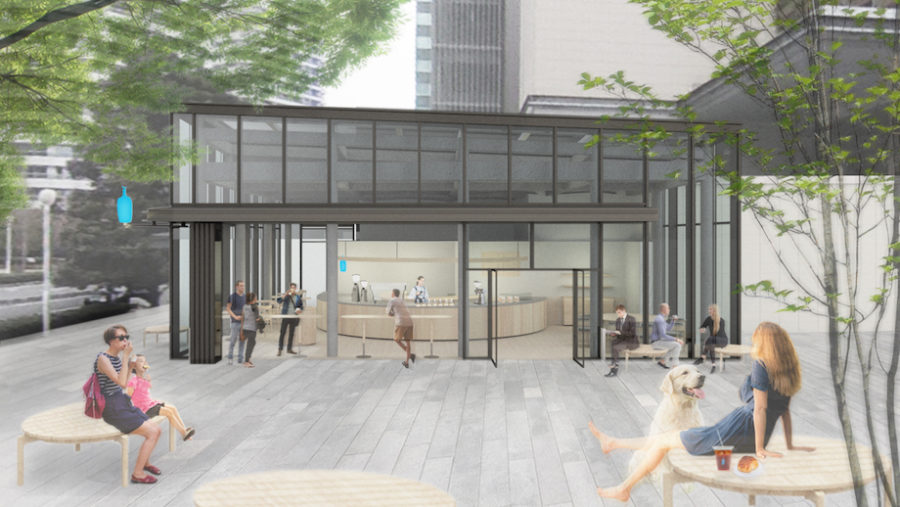
CULTURE


©︎ DJI

©︎ Payman Barkhordari

©︎ Tahmineh Monzavi
〈プレゼンス・イン・ホルムズ2(マジャラ・レジデンス)〉(英語表記:Presence in Hormuz 2 (Majara Residence))は、イランのホルムズ島という土地の自然のもつ色や形態、伝統的な建築から着想した、宿泊施設と公共施設を含むカラフルな複合施設です。
イランを拠点に活動するZAVアーキテクツ(ZAV Architects)が設計した、土を使った地域の伝統的な工法を用いたヴァナキュラーな建築です。
(以下、ZAV Architectsから提供されたプレスキットのテキストの抄訳)

©︎ Payman Barkhordari
建築の限界を拡張するプロジェクト
プレゼンス・イン・ホルムズ(Presence in Hormuz)とは、イランの南、ペルシャ湾に浮かぶホルムズ島にて実施された一連のプロジェクトである。
これらのプロジェクトは、島の特定のポイントを活性化することにより、建築環境を超えたより大きなインパクトを与え、建築の活動領域を拡大することを目的としている。

©︎ DJI

©︎ Soroush Majidi
〈プレゼンス・イン・ホルムズ2(マジャラ・レジデンス)〉は、ホルムズ島というイランの辺境地域における建築美学のための代替案を提供する。
このプロジェクトは、大地と地理を出発点として建築を再考することで「地球」に主導権を与え、デザイン、建設、実施のプロセスを通じて「人」と「公共領域」に主導権を与えることで、建築の限界を押し広げようとする取り組みである。

©︎ Soroush Majidi
〈マジャラ・レジデンス〉は、ホルムズ市から5kmのところに位置する、観光客向けの宿泊施設と誰でも利用可能な公共施設を併せ持つドーム建築の集合体である。
地区の面積は10,300m²であり、6,300m²のオープンスペースと4,000m²の建築を有している。

©︎ Tahmineh Monzavi

©︎ Soroush Majidi
有機的な200の土のドームで構成され、さまざまなプログラムを収容することが可能となっている。
130のドームには最大75人を収容できる17のスイートルームがあり、残りのドームは自由に活用可能とすることで、建築に公共的な領域を取り込んでいる。

©︎ Tahmineh Monzavi

©︎ Tahmineh Monzavi
土でつくるローテク建築
ドームは基礎から壁まで土でできており、あたかも大地が膨らみ宿泊空間をつくり出したかのようである。
ローテク建築であるスーパー・アドビ(Superadobe:土のうを積み上げる工法)を採用することで、高価な輸入資材ではなく、人間の労働力の割合を高めることができる。このプロジェクトでは、合計40人の未熟練労働者が技術を身につけ、力を発揮した。建設された部材には彼らの技の痕跡が残されている。

Diagram – THE CRAFTED
自然のもつ色と形態を取り込む建築
ホルムズ島の最大の特徴は、さまざまな鉱物を含んだ土でできた色とりどりの山々である。砂、砂利、石、岩など、大きさも色も異なる小さな粒子が集まって、島の魅力的な風景を形づくっている。
このホルムズの地理的条件と結びついた建築とすることで、「地球」に主導権を与えている。

Diagram
プロジェクトの背景となる周囲の自然に目を向けると、在来種の樹木で構成された多孔質な緑の風景に出会う。〈マジャラ・レジデンス〉は空間の可能性を模索する場であり、自然の流れを受け入れるのに十分な多孔性を持っている。
公共施設やアメニティは、中央のパブリックプラザを中心に配置され、宿泊施設は階段でアクセスする高い基盤の上に配置されている。

Diagram
ドームの集合体である建築は、島の土壌の質感と粒状性から着想し、空間分子の集合体としてイメージして構成されている。
この分子構成は、「Bork.e」と呼ばれるこの地域の伝統的な建築から着想を得ている。

Diagram – THE ARCHETYPE [BORKE]
建築物はこの土地から色を抽出し吸収する。この非常に単純な法則により、建築全体のボリュームが切り取られているようにも見えるのである。

Diagram – THE TUNED

Diagram – COLOUR AS A TURNING POINT
ドームが色づくことで、全体がボリュームのあるさまざまな色のパッチワークのように変化し、フォルムの境界が識別できない、あいまいな状態となる。
これはさながら、カラフルな液体が我々がつくり出した形態を内と外から侵食しているようにも見える。この結果、ホルムジの人々の手によって建てられた、公共活動を含むカラフルな地域ができあがった。

Diagram – THE CONNECTED

©︎ Payman Barkhordari

©︎ Payman Barkhordari

©︎ Payman Barkhordari

©︎ Payman Barkhordari

©︎ Tahmineh Monzavi

©︎ Soroush Majidi

©︎ Soroush Majidi

©︎ Payman Barkhordari

©︎ Tahmineh Monzavi

Diagram

Diagram

Topographic Plan

Physical Program

Section A-A

Section B-B

Section C-C
以下、ZAV Architectsのリリース(英文)です。
Presence in Hormuz 2 (Majara Residence)
Description
Presence in Hormuz is a series of projects located on the island of Hormuz, south of Iran in the Persian Gulf. These projects aim to activate certain points on the island to create a bigger impact and to expand the field of operation of architecture beyond the built environment. Majara Residence, or Presence in Hormuz 2, offers an alternative for architectural aesthetic in this marginal region of Iran. By pushing the limits of inner tools of architecture, it seeks opportunities in giving agency to the “planet” by making the earth and geography a point of departure for rethinking architecture and to the “people” and the public realm through processes of design, construction, and implementation.
Majara Residence is a gateless neighborhood, a conglomeration of dome structures hosting both accommodations for tourists and public usages open to all, located 5 kilometers away from the city of Hormuz. It has an area of 10300 square meters, with 6300 square meters of open space and 4000 square meters of built area. It consists of 200 earth domes with an organic spatial organization, which have the capacity to contain a variety of programs. 130 domes host 17 suites with a maximum capacity to host 75 guests while the remaining domes house open-to-all uses, and the architectural scenario lets the public realm in.
The domes are made of earth from their foundation to the walls, as if the earth has swollen to provide space for accommodation. The low-tech building method of the projects which is superadobe tends to increase the share of human labor over expensive imported materials. In total, 40 unskilled workers became skilled and empowered in this project, while the constructed elements bear the trace of their crafts.
Hormuz Island’s most famous characteristic is its colorful mountains made of soil containing various minerals. Small particles of sand, gravel, stone and rock, with different sizes and colors, come together to shape the charismatic landscapes of the island.
Following this idea, the geography of Hormuz has been given agency to impact the architectural proposal that focuses on the idea of hyper-connectedness of architecture to its geo-context in various scales.
When we look at the immediate natural backdrop of the project, we encounter a porous green fabric consisting of native species of trees. The configuration of the project is very much informed by this natural field condition. The erected architecture is a field of spatial possibilities, porous enough to contain the natural flows of flora and fauna.
This architectural field is envisioned as a neighborhood of programs. Public facilities and amenities structured around a central public plaza and organized around a triad of staircases with the accommodation units on a graded base that its different levels are accessed by the stair sets. Inspired by the texture and granularity of the soil on the island, the colonies of the constructed portions of this neighborhoodlike field, are architecturally imagined as aggregated collectivity of spatial molecules. The archetype (Genome) of this molecular configuration is inspired by a local tradition of construction within the region called “Bork.e” The project is established out of a variegated taxonomy of molecular structures; it is as if they are recreating a constructed replica of the geographical skyline.
The formal connection of the architectural proposal is further enhanced through the use of a color pallet that is tuned with the colorful context. The application of this polychromic pallet to the raw morphology of domes is as if the fourfold of colors are poured on an initial volumetric canvass. The architectural forms absorb the color while the in between land doesn’t, one would say the whole volume of the complex is now trimmed by this very simple law of nature.
Now, a hybrid condition is at hand where the boundaries of the forms are not identifiable anymore, since colored domes transform to volumetric colored patches. The hybrid regime that creates this semi-fantom forms, can be analyzed in section: imagine that a viscous sticky and live liquid sets off to conquer our form from the openings, while the colorful liquid finds its way in to the interior of our form, it is also defeating the exterior surface.
The result of the process is a polychromic gateless neighborhood containing public activities built by the hands of the Hormuzi people.General Information
Project name: PRESENCE IN HORMUZ 2
Architecture Firm: ZAV Architects
Architecture Firm Instagram: @zavarchitectsCompletion Year: 2020
Gross Built Area: 10300 m²
Area: 4000 m²
Landscape Area: 6300 m²
Project location: Iran, Hormuz Island
Latitude: 27°04’17.6″N
Longitude: 56°25’37.2″EMedia Provider
Photo credits: Tahmineh Monzavi, Soroush Majidi, Payman Barkhordari
Photographer’s Instagram: @tahminehmonzavi | @soroushmajidi | @payman_barkhordariAdditional credits
DESIGN TEAM
Lead Architects: Mohamadreza Ghodousi, Fatemeh Rezaei, Golnaz Bahrami, Soroush Majidi
Design Assistants: Sheila Ehsaei,Sara Jafari, Payman Barkhordari, Mohsen Safshekan, Kaveh Rashidzadeh, Hossein Panjehpour
Landscape: Maryam Yousefi, Morteza Adib
Interior Design: Sara Jafari, Taraneh Behboud, Sara Nikkar, Mohsen Dehghan
Light Consultant: Tajang LightSupervision: Soroush Majidi, Payman Barkhordari, Sheila Ehsaei
Modeling: Somayeh Saeidi
Presentation: Fereshteh Assadzadeh, Somayeh Saeidi, Arshia Hashemipour, Dorsa Tavakoli, Sara FallahzadehCLIENTS
Owner: Ali Rezvani
Client: Ehsan RasoulofStructural Design: Behrang Baniadam, Rouhi Touski
Civil Engineering: Farhad Beigi
Electrical Engineering: Pejman Moradian
Mechanical Engineering: Saeid Afsharian
Culinary Manufacturer: Matbakh Ara
Environment Consultant: Salman Rasouli, Roya Yazdizadeh
Accommodation Consultant: Nasim MosavarCONSTRUCTION TEAM
Project Constructor: Amir Tehrani Nobahari
Construction manager: Hormat Ghasemi
Construction vice-manager: Ramin Koulaghani, Amin Timas
Mechanical constructor: Javad Irandegani, Hamid Haji Posht-e-Gol
Floor constructor: Davoud Etemadi
Fenestration builder: Mehra Company
Interior plaster: Gholamali Abbasi
Exterior plaster: Esmaeil Salimi
Construction painter: Farzad Moharami
Logistics: Nabiollah Timas, Borhan Pouyan, Ali Ghanbari, Ayoub Owj Hormozi, Khalil Owj Hormozi, Abdolhamid Hormozi, Davoud Hormozi, Ali Ghalandari Zehi, Farhad Shadan, Assad Gedri, Abbas Gedri, Ali Ghazi, Majid Bazmandeh, Ali Nasernia, Rahmat Ghalandari, Davoud Mohtaji, Morteza Mohtaji, Mohammad Vahedi, Mosayeb Zarei, Kambiz Naroui, Yasser Naroui, Nassir Narouii, Din Mohammad Naroui, Mojtaba Farhadi, Abbas Nasaji, Esfandiar Khorshidi, Khoubyar Khorshidi, Jalal Bameri, Ghassem Bameri, Enayat Karami, Reza Amirian, Eshgh Ali, Nabi Akrami, Mohammad Moallemi, Sajad Gholampour, Seyfollah Rasouli, Ali Golzari, Soheil Khedmatkari, Hosein Zohouri
「PRESENCE IN HORMUZ 02| MAJARA RESIDENCE」ZAV Architects 公式サイト
https://zavarchitects.com/works/PRESENCE-IN-HORMOZ-02









